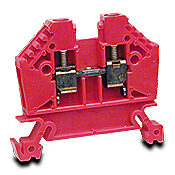Can anyone tell me, where to find in NEC an article related to the use of TERMINAL BLOCKS OR STRIPS? Also, in a residential application we have to install a distribution box to spliced together some wires and we are looking for the best look and aproved by NEC.
Any Iedas will help
Any Iedas will help


